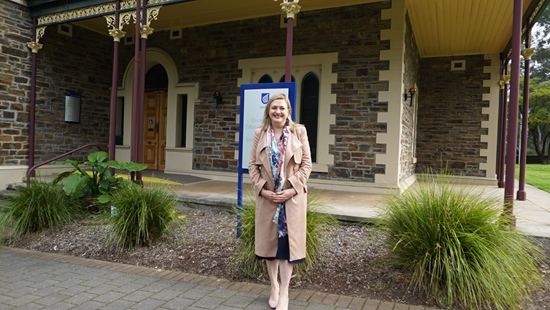(People's Daily Online)

Deputy Vice Chancellor of the University of South Australia Professor Tanya Monro tells her impression of China's science research
In 1998, the 25-year-old female physicist Tanya Monro won the Bragg Gold Medal for her research achievements in the field of photonics. The Bragg Medal, established in 1992, is a prize to recognize the work of a Ph.D. student in Australia that is considered to be of outstanding quality.
Twenty years have since passed, and the young scholar has grown into a famous scientist in Australia who is also the Deputy Vice-Chancellor of the University of South Australia. In our recent interview with Professor Monro, we got to hear many of her compelling stories from the science world and how she views the current cooperation between China and Australia in related research areas.
As an award-winning Australian physicist, Professor Monro's field of research is in photonics, the science of light, mainly focused on the development of new lasers and sensor technology. When asked why she chose photonics as a career path, Professor Monro explained, "When I went to university, I discovered photonics was quite a new field. What attracted me was the idea that in a new field, you can be creative and discover things without the need for them to be very specialized."
Professor Monro creatively combined photonics research with the medical field, working with her team to uncover many new findings. During her research, new optical materials were developed to make optical fibers which can now be used in many kinds of surgeries.

Deputy Vice Chancellor of the University of South Australia, Professor Tanya Monro in the interview
Professor Monro was awarded the South Australian Scientists of the Year Award in 2010 and the Eureka Prize in Interdisciplinary Scientific Research in 2015. "I think that if you want to create knowledge that impacts the world, you have to look at the big problems. One discipline can never solve them. The universities make it easier for researchers to work in an interdisciplinary way."
With her other role as the Deputy Vice-Chancellor, Professor Monro carries forward the further development of inclusiveness and innovation, promoting the cooperation between China and Australia in photonics research.
In 2017, a collaborative center was set up by the University of South Australia and the Shangdong Academy of Science to together work in advanced laser and fiber optic sensors. "Photonics is an area in which Australia is very talented. China has outstanding photonics capabilities, and I think we can provide opportunities for our Chinese collaborators as well. We are excited to assist Chinese students to come through as a result of that collaboration," said Monro.
"My experience with Chinese students is that they're often confident about connecting industry to research which is wonderful. Research is risky, and it often goes wrong. If it doesn't go wrong at least some of the time, you're not doing risky enough research. I often find my Chinese students are more fearless."
Besides the collaborative center, the University of South Australia has also established many cooperative projects with Chinese universities such as the An De College founded together with Xi'an University of Architecture and Technology.

Deputy Vice Chancellor of the University of South Australia, Professor Tanya Monro
Professor Monro believes that China and Australia have different strengths and that is why such cooperation is essential to Australian universities and even the development of Australia as a whole.
"Australians tend to be resourceful and able to do creative things, and what I find in China is the extraordinary ability to put together large teams, large initiatives, and significant infrastructure. They are willing to work on tough problems that take a long time. I think if you can combine those strengths you can do some extraordinary things."
Recalling her first visit to China 10 years ago, Professor Monro was impressed with the escalation of investment and priority in science research in China today. "When I first visited Chinese universities, I found big labs with inadequate equipment, but now even relatively junior researchers there have facilities that would make many professors in Australia very jealous," she said.
Professor Monro recognizes that China today has taken the leading position in photonic technologies and has built tight connections between universities and industry to promote the development and application of photonics. "China starts to play a more significant role in some of the photonic device industries which is becoming more important because we are moving towards to a more automatic world."
Talking about the future, Professor Monro said, "I think the greater the diversity and the more approaches you can bring, the more creative the activity and thus the bigger the possibility. We will always do better in science and research if we connect the best minds in the world. China is, without question, a priority partner."